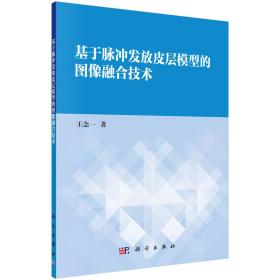
物流英语
¥ 34.04 6.1折 ¥ 56 九品
仅1件
北京海淀
认证卖家担保交易快速发货售后保障
作者吴金卓、高珊、沈微 编
出版社中国财富出版社
出版时间2020-02
版次1
装帧平装
货号A18
上书时间2024-11-02
- 在售商品 暂无
- 平均发货时间 15小时
- 好评率 暂无
- 最新上架
商品详情
- 品相描述:九品
图书标准信息
- 作者 吴金卓、高珊、沈微 编
- 出版社 中国财富出版社
- 出版时间 2020-02
- 版次 1
- ISBN 9787504764959
- 定价 56.00元
- 装帧 平装
- 开本 16开
- 纸张 胶版纸
- 页数 270页
- 【内容简介】
-
《物流英语》紧密结合物流业发展的新形势和新特点,系统介绍了物流导论、物流系统(运输、仓储、库存、包装、装卸搬运、配送、信息技术)、整合物流管理(物流成本管理、物流质量管理、物流服务管理)、供应链管理、商业合同与文档、国际物流、物流发展新形势等专业基础知识,并通过强化培训,培养和提高读者的实际操作和应用能力。《物流英语》每一章都包括正文、词汇与表达,并配有相应的课后习题供学生复习和理解。另外,根据正文内容的不同,还设置了英语情景对话、案例分析、单证制作等学习内容,有利于师生在课堂上的互动,帮助学生提高学习兴趣、增强学习效果。《物流英语》可以作为物流工程与物流管理专业和其他相关专业的教学用书,也可供物流研究者及社会从业者阅读参考。
《物流英语》选材广泛,以国内外近期出版的教材、期刊和网站资料以及世界知名物流公司的相关资料为基础,时效性强、内容丰富、材料翔实,具有很强的理论性和实用性。 - 【目录】
-
Chapter 1 Introduction to Logistics
1.1 Fundamentals
1.1.1 Definition of Logistics
1.1.2 Historical Development of Logistics
1.1.3 Logistics Related Activities
1.1.4 Objectives of Logistics
1.1.5 7R Theory of Logistics
1.2 The Role of Logistics in the Economy and Organizations
1.2.1 Logistics in the Economy- A Macro Perspective
1.2.2 Logistics in the Firm - A Micro Perspective
1.3 Logistics Industry in China
1.3.1 Current Status of the Logistics Industry in China
1.3.2 Types of Logistics Enterprises in China
1.3.3 Logistics Prosperity Index
Exercises
Chapter 2 Logistics Systems
2.1 Transportation
2.1.1 Introduction to Transportation
2.1.2 Modes of Transport
2.1.3 Intermodal Transportation
2.1.4 Containerization
2.2 Warehousing
2.2.1 Introduction to Warehouses
2.2.2 Introduction to Warehousing
2.2.3 Warehousing Operations
2.3 Inventory
2.3.1 Introduction to Inventory
2.3.2 Types of Inventory
2.3.3 Inventory Management
2.4 Packaging
2.4.1 Introduction to Packaging
2.4.2 Common Packaging Materials and Determinants
2.4.3 Packaging Marks
2.5 Handling
2.5.1 Introduction to Handling
2.5.2 Operation Machinery
2.5.3 Material Flow Management
2.6 Distribution
2.6.1 Distribution Channels
2.6.2 Distribution Centers
2.6.3 Distribution Activities
2.7 Information Technology
2.7.1 Information Technology in a Supply Chain
2.7.2 Order Management and Customer Service through Information System
Exercises
Chapter 3 Integrated Logistics Management
3.1 Logistics Cost Management
3.1.1 Introduction
3.1.2 Methods of Logistics Cost Management
3.1.3 Case Study
3.2 Logistics Quality Management
3.2.1 Introduction
3.2.2 Logistics Quality Management Approach
3.2.3 Case Study
3.3 Logistics Service Management
3.3.1 Introduction
3.3.2 Logistics Service Quality Evaluation
3.3.3 Case Study
Exercises
Chapter 4 Supply Chain Management
4.1 Introduction to Supply Chain
4.1.1 What Is A Supply Chain
4.1.2 Decision Phases of A Supply Chain
4.1.3 Process View of A Supply Chain
4.2 Supply Chain Management Methods
4.2.1 Quick Response (QR)
4.2.2 Efficient Consumer Response (ECR)
4.2.3 Activity Based Classification (ABC)
4.2.4 Value Chain Analysis (VCA)
4.3 Supply Chain Drivers and Obstacles
4.3.1 Drivers of Supply Chain Performance
4.3.2 Obstacles to Achieving Strategic Fit
4.3.3 Case Study: Mintendo Game Girl
Exercises
Chapter 5 Business Contracts and Documents
5.1 Business Negotiation
5.1.1 Elemental Procedures of Negotiation
5.1.2 Strategies of Business Negotiation
5.1.3 Basic Principles of Negotiation
5.1.4 Business Letters: Enquiry and Quotation/Offer
5.2 Contract
5.2.1 Introduction to Business Contract
5.2.2 Formation of A Business Contract
5.2.3 Sample Contract Document
5.3 Payment
5.3.1 Payment Instruments
5.3.2 Remittance and Collection
5.3.3 Letter of Credit
Exercises
Chapter6 International Logistics
6.1 Introduction to International Logistics
6.1.1 Definition of International Logistics
6.1.2 Features of International Logistics
6.1.3 The Role of Governments in International Logistics
6.2 International Trade Terminology
6.2.1 WhatAre the Incoterms 2010
6.2.2 Case Study
6.3 International Cargo Transportation
6.3.1 Ocean Transportation
6.3.2 Air Transportation
6.3.3 Railway Transportation
6.3.4 Road Transportation
6.3.5 Multimodal Transportation
6.4 International Cargo Insurance
6.4.1 Maritime Loss
6.4.2 Kinds of Cargo Insurance
6.4.3 Insurance Premium
6.4.4 Insurance Claim
6.4.5 Insurance Policy Document
6.5 International Cargo Warehousing
6.5.1 The Role of International Warehousing
6.5.2 Bonded Warehouse
6.5.3 Bonded Zones and Bonded Warehouses in China
6.6 Customs and Customs Clearance
6.6.1 Introduction
6.6.2 Customs Declaration
6.6.3 Customs Clearance Process for Bonded Goods
6.6.4 Import/Export Duty
6.6.5 Filling in a Declaration Form
6.7 International Cargo Inspection
6.7.1 What Is Inspection
6.7.2 Inspection Time and Places
6.7.3 Inspection Standards
6.7.4 Inspection Institutions
6.7.5 Inspection Certificates
6.8 International Logistics Services
6.8.1 International Freight Forwarding
6.8.2 International Shipping Agency
6.8.3 International Express
Exercises
Chapter 7 New Trends of Logistics
7.1 Green Logistics
7.1.1 Introduction to Green Logistics
7.1.2 Environmental Issues in Logistics
7.1.3 Development and Application of Green Logistics
7.1.4 The Plan for Green Logistics
7.1.5 How to Implement Green Logistics in A Greener Supply Chain
7.2 Third-Party Logistics(3PL)
7.2.1 Introduction to 3PL
7.2.2 3PL Providers
7.2.3 Future Trend of 3PL Industry
7.3 Reverse Logistics
7.3.1 Introduction to Reverse Logistics
7.3.2 The Reverse Logistics Motivators
7.3.3 Reverse Logistics Opportunities and Challenges
Exercises
References
点击展开
点击收起
— 没有更多了 —












以下为对购买帮助不大的评价